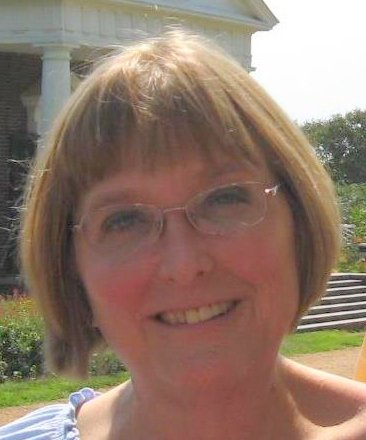Through all the rhetoric, the misinformation, the lack of information, the cheering and the nay-saying, and the threats and realities of government shutdowns that surrounds the Affordable Care Act (ACA), one thing remains certain: individuals will begin enrolling for health insurance at state exchanges starting on October 1, 2013. Whatever else people may think the ACA is or isn’t, it remains this country’s first small shift in improving our for-profit health care delivery system—the only such system in the industrialized world.

Donna Smith: “The fact remains that we all have bodies and we all will someday get sick or hurt; all of us will need some level of health care.”
And while most of the country has been focused on either the implementation or the destruction of this one small advancement, there remain groups and individuals diligently working through all the noise, never losing sight of the real finish line—the true prize: a U.S. single payer health care system.
We at Wisdom Voices thought October would be the ideal month to feature one such individual. For as much as the ACA moves the boulder up the hill to real health care for all, it remains a far cry from what the rest of the industrialized world already knows: that health care is a right—not a privilege—something to which all citizens are entitled. So while we dig out of the mess of possible debt ceiling defaults and government shutdowns, we are pleased to feature the work of Donna Smith, Executive Director of Health Care for All Colorado and the Health Care for All Colorado Foundation as our October Progressive Profile. A veteran of the fight for health care justice, Donna and her husband were featured in Michael Moore’s 2007 documentary Sicko, which compares the for-profit, non-universal U.S. system with the non-profit universal health care systems of Canada, the United Kingdom, and France.
“I always remind people that the reason we were in that movie was not because our story was unique, but rather for the opposite reason—our story was NOT unique. There are so many Americans who fight for (health insurance) coverage and who even with coverage end up bankrupt because of huge deductibles, huge copays, and huge out-of-pocket expenditures that are not paid for by the insurance companies,” Smith said in a recent interview with Wisdom Voices.
“Nobody wants that,” said the writer and blogger who contributes articles on health care justice to national web sites. She also provides incredible insights into the injustice of our current for-profit health care system with her writings at her own site. “I know when I was in the deepest throes of our (health care) struggle, I used to sit in front of my computer screen late at night as I would be writing, and I would think: I never want my grandchildren to sit afraid in front of a computer screen late at night and wonder if they were going to be able to pay for their own health care or to be able to take care of their family members’ health care. Or wonder if they were going to be able to go forward with their lives simply because they got sick or hurt.
“There are days that I feel like I just don’t know how to fight it (the insanity of our health care delivery system) and then I have to remember that 123 people die every day in the United States not because we didn’t have the cure to give them but because they didn’t have the public or private coverage or credit to pay for the care they needed. Think about that for a minute: 123 people every day. That’s like a jet liner crashing every single day. The flip side to that is that there are another 1,973 people who go bankrupt every day because of medical debt or medical crisis. People who didn’t have enough health care coverage or savings to have done what they needed done, so they end up losing their homes, their savings, their pensions…things they worked a life time to get. That’s about 700,000 bankruptcies a year related to medical debt and that is just unacceptable to me on every level.”
Smith, a two-time cancer survivor and her husband, who has serious coronary artery disease, knows first hand the stigma associated with “pre-existing” conditions that now disappear with ACA implementation. “We’ve been married 37 years and for the last 35 we’ve struggled with insurance companies—whether it was fighting through getting insurance companies to pay for thing or having enough insurance cover what we needed done or whether it was the brief periods when we lived with the fear of no insurance at all. It seems as though so much of life is spent on fighting for health care issues—struggling for something that should be a right.”
In her work for Health Care for All Colorado she continuingly meets people who repeat the talking points against the ACA and universal coverage, most often encountering those who think health care is not an individual right, because it’s not in the constitution. Smith tries to take the conversation a step higher, reminding people that all the rights and freedoms offered by our founding documents are out of reach for people who do not have the basic right to live a healthy life. In her poignant piece, “When Our Neighbors Wish Us Dead or Broke, We’re in Trouble with More Than Our Health Care System,” she wrote:
“Our health care system is unjust, that much I think I have established over and over again. Our health care system wastes our health care dollars on some of the most inefficient and costly ways of providing care and keeps people from seeking care when it would be the most sensible and affordable. Our health care system is simply a reflection of our societal values. Our health care system values money over life, and values arrogance over compassion.”
The moral question each of us has to answer is: Do I believe all human beings deserve the right to medical care?
“I tell people that say there are lines for health care in countries with single payer systems that here in America, we don’t even allow people to get into the lines,” Smith said. “And even more who because of high deductibles and copays, wait before they see a doctor. It’s just a fallacy that we here in the United States don’t ‘wait’ for care.
“The fact remains that we all have bodies and we all will someday get sick or hurt; all of us will need some level of health care. Health care is not like owning a more expensive car and needing better insurance, health care is something that affects every aspect of our every day lives and the health of those around us. It’s about whether we want our neighbor’s children to be healthy when they’re at school with our own children. And do we want our economy to be healthy when we spend so much more on health care than the rest of the world does.”
Smith’s work with Health Care For All Colorado currently centers on gathering enough signatures to put on a citizen-driven state initiative on the ballot in November 2014 that establishes health care as a human right and a public good for all Coloradans. The initiative will require100,000 signatures to make it on the ballot in 2014. “I’m not sure if we will reach our goal in the next six months,” Smith said. “But we can bring it back again much like the marijuana initiative here in Colorado that took a couple of tries to get it on the ballot.”
In addition to promoting the moral and fiscal benefits to a single payer health care system, Smith travels to other countries speaking out against their attempts to move to privatization of health care that would result in other countries adopting a system more like that here in the U.S. She recently spoke to a group in Australia (see below). “Not all countries have a pure single payer system, some have a mixture of public and private, but they have such strict regulations on insurance companies that we here in America would scarcely recognize what those private plans look like. Americans just don’t know about this, in part because they’re not told, they’re not educated. If you go to another country one of the things you notice right away is that you don’t see all this advertising for drugs and medications that are done here.”
Does she envision single payer eventually taking hold in the United States? “Short term, at the national level, we’d have a hard time thinking that this Congress and this President would go after a single payer system,” Smith said. “The fight for the ACA bruised so many people on both sides and continues to do so. They are not going to be able to go back in the transformational way that those of us advocating for single payer would like to see it happen. But, the one opening we got through the ACA was waivers under Section 1332 of the Affordable Care Act. That allows for states to innovate in terms of how they deliver their health care, provided they cover at least as many people, which would not be an issue with single payer.
“But, passing single payer on a state level is not easy, Smith cautioned. “The same forces that fought it on a national level will fight it on the state level, much the way we’ve seen the Koch Brothers work on state legislatures on union issues. So, we’ve seen Vermont pass Green Mountain Care under (Governor) Peter Shumlin, but they’ve had a difficult time with the funding mechanism there. That happens because there are forces that don’t want to see a smaller state like Vermont move forward on single payer.
“I think the real chance is if a big state like California or New York can be forceful enough and progressive enough to push it across the finish line. And once one state does that and we see it function well there—similar to what we saw happen with Romney Care, which served as the model for the ACA—then I think it will be a similar scenario for single payer. That’s the way it happened in Australia; their national health care system started state-by-state and many of us know the story of Canada and Tommy Douglas. The crisis in health care is not going to get any smaller any time soon. The nation is going to have to go at it again. (Even with full implementation of the ACA, not all U.S. citizens will be covered and medical bankruptcy remains in place with the ACA). The number of people suffering is really not going to back off until we truly transform the system to one that’s universal and financed under a single payer system.”
What Is Single Payer
The best explanation on a definition of single payer can be found at the Physicians For A National Health Program by clicking here. Another way of describing it is: Medicare For All. And yet another way of thinking of it is: imagine that terms such as “deductible.” “out of pocket,” “copay” “co-insurance” “HMO” “PPO” all disappeared from our medical vocabulary. Every medical necessary procedure would be covered. As difficult as it is for Americans to imagine, this is how the rest of the industrialized world provides health care coverage for all of its citizens. For more information on single payer, we recommend googling and reading, or linking to the following web sites:
Physicians For A National Health Program
Campaign For A Health California
The Progressive Democrats of America

